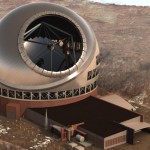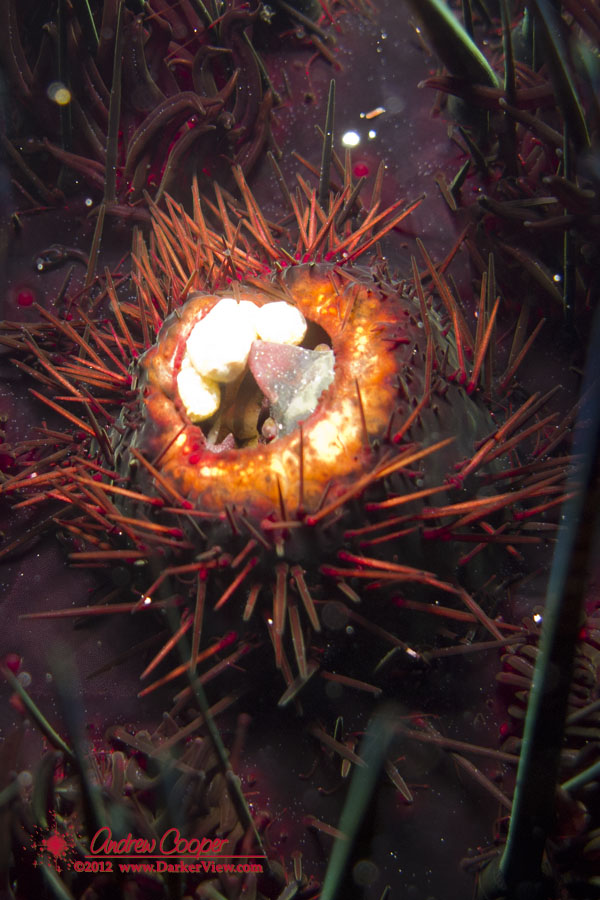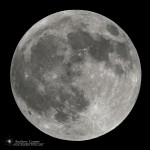Today Mercury reaches maximum elongation, the furthest point it will reach from the Sun in the sky and the highest it will be above the sunrise for this morning apparition. The planet is easily visible as a bright, starlike object about 15° above the rising Sun as the twilight begins. Over the next couple weeks Mercury will slide back into the sunrise, heading for superior conjunction on February 16th.
The December WHAC Meeting
The West Hawai’i Astronomy Club will hold its December Meeting as usual on the second Tuesday of the month, December 11th at 7pm. We will be unable to have the meeting at CFHT due to conflict with another event, thus we will be meeting at Keck Observatory HQ in Waimea.
As many of our members traveled to observe the recent total solar eclipse in Australia we expect to be treated to photos and travelogues of their expedition. Join us for eclipse photos and more.
Jupiter at Opposition
Jupiter will pass through opposition at 14:43 today. The planet will rise at sunset and transit at midnight, available for observation for the entire night. For the remainder of the year and much of the spring, the planet will shine brightly in the evening sky.
TMT Permit Approved
The Conservation District Use Permit (CDUP) for the Thirty Meter Telescope has been granted. The Hearing Officer’s report is published and available for reading. And it is interesting reading! Quite oddly I do enjoy reading these legal documents, I have learned much about the summit through the various documents like this.

There are numerous claims that seem quite odd to anyone familiar with the summit, claims that were easily disproved during the investigative process. An “extensive fencing network”? What fences? Anyone who has visited the summit knows that there are no fences around the observatories at the summit. There are some small enclosures necessary to keep people safe around storage tanks and such. Well below the summit the VLBA antenna is enclosed for safety reasons, as is an electrical substation at Hale Pohaku.
49. Petitioners contend that a purported “subdivision” of land among the various existing observatories is evidenced by an “extensive fencing network.” Exhibit A-202 at 22. As was plain during the site visit, there is no “fencing network,” much less an “extensive” one, in the summit region of Mauna Kea.
Claims that the TMT would negatively impact the waters of Lake Waiau? The TMT is not located anywhere near the lake’s watershed. The petitioners engaged in legal mudslinging, throwing as many claims as possible at the case to see what would stick, a legal tactic I dislike immensely. Making such unfounded claims merely serves to discredit the petitioners, distracting the conversation away from the real issues involved in sharing the summit region.
466. Considering all of the evidence, including but not limited to the testimonies of Drs. Liu and Kauanui, and giving such evidence due weight, Petitioners have not offered reliable, probative, substantial, or credible evidence, scientific or otherwise, to suggest that the Project will be harmful to the health, safety, and welfare of native Hawaiians or anyone else.
There are reasonable cultural objections to the use of the mountain for astronomy. These are what must be addressed in this process. Can use of the summit be shared among the various parties? The report clearly comes to the conclusion that we can share the summit and that the presence of the new telescope can be minimized through proper measures.
101. Petitioners did not offer reliable, probative, substantial, and credible evidence, whether from expert or lay witnesses, that would support the conclusion that the TMT Project would cause substantial adverse impact to plants, aquatic life and wildlife, cultural, historic, and archaeological sites, minerals, recreational sites, geologic sites, scenic areas, ecologically significant areas, or watersheds.
There is a list of conditions, which seem quite reasonable… The staff must receive cultural and environmental education on the special nature of the summit of Mauna Kea. We do this at Keck, something I usually find quite interesting. They must use a completely enclosed waste water system. There must be an invasive species plan. Conditions around the construction site must be monitored, including arthropod populations, during construction and for two years afterwards. There is an extensive list that goes on from here…
e. The proposed land use, including buildings, structures, and
facilities, will be compatible with the locality and surrounding areas, appropriate
to the physical conditions and capabilities of the specific parcel or parcels
Will this be the end of the legal process? No. There is an additional hearing for the petitioners to take place before the Hearings Officer so that both sides may review the findings. It is also likely that at least one lawsuit will be filed in reaction to issuance of the CDUP. Unless there is some new legal issue these are unlikely to progress very far. The process so far has been quite exhaustive, any further legal action would simply be a rehashing of what we have already heard.
Postcard from the Universe – Orion Nebula with the EOS-M
The first astrophoto taken with the EOS-M. Considering the trouble it is to manually trigger the exposures without proper camera control, I am surprised I stuck it out to take 40+ subs. Since 30 seconds was the longest I could program the camera for I simply maxed out the ISO and took a lot of subs plus a dozen darks. There is still way too much noise in the resulting frame. Still, the ISO 12,800 frames are not all that bad, better than I expected. If this camera had remote control it would be a decent little astro camera. Longer subs and a lower ISO would deliver decent results.

Postcard from the Reef – Lei Triggerfish
Postcard from the Reef – Urchin Crab
Sometimes it is simply knowing where to look.
I have known about these guys for a while, even looked a few times. It is daunting when you know exactly where to look, but that place is heavily defended and tough to approach. Obtaining a photo of something that is nestled amongst six inch spines? Challenging…

Full Moon

A penumbral lunar eclipse will be visible from western North America, across the Pacific to much of Asia. This is a fairly minor eclipse, with the Moon passing through the outer penumbral shadow of the Earth. A careful observer will note the light of the full Moon dimmed. As the Moon will not enter the darker umbral shadow the effects of this eclipse will not be obvious.
Mauna Loa in the Haze
The Moon and Jupiter
Tonight the Moon will be about 7° away from Jupiter, a bright pair rising together in the eastern sky after sunset. Tomorrow, November 28th, will see the Moon east of Jupiter, but even closer, just under 5° away.


